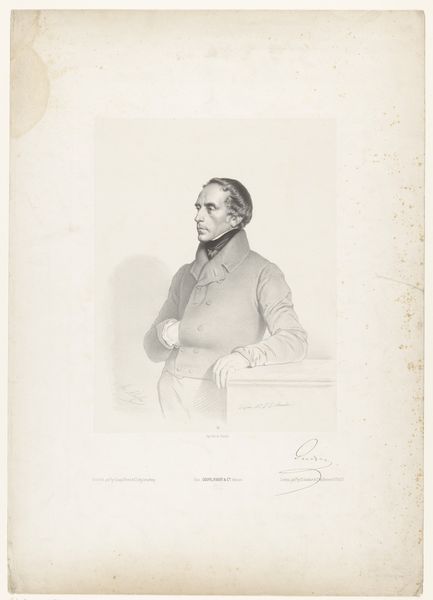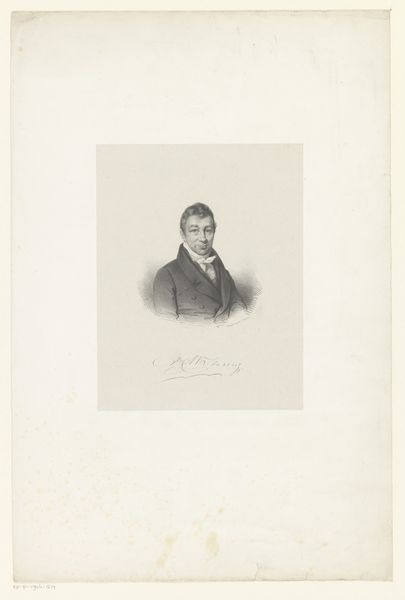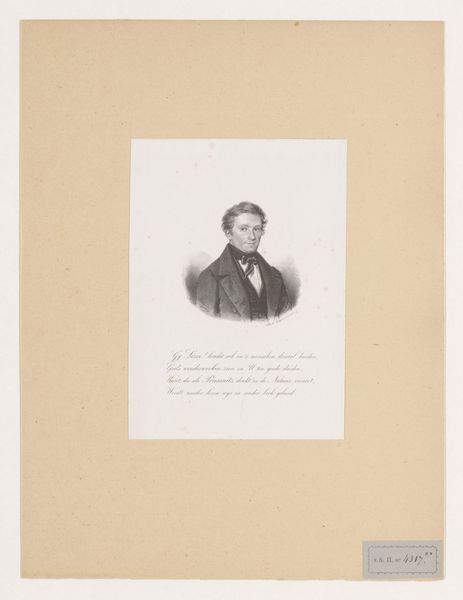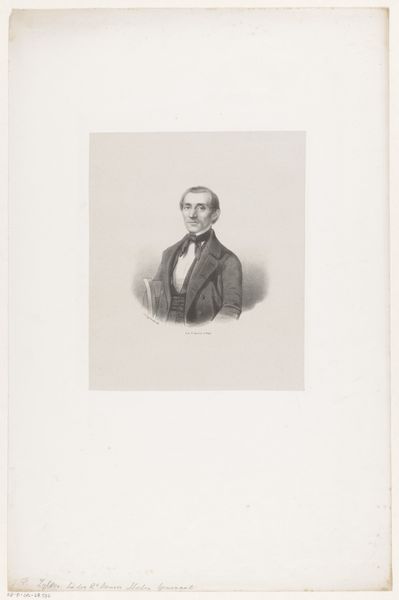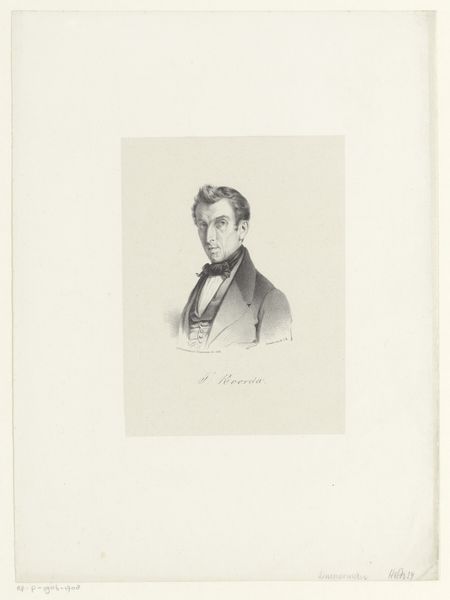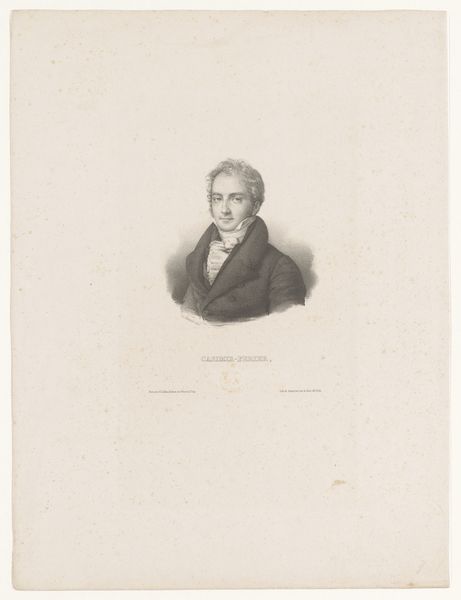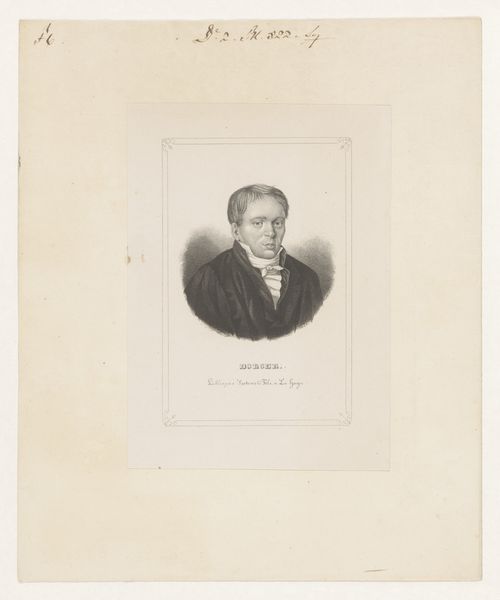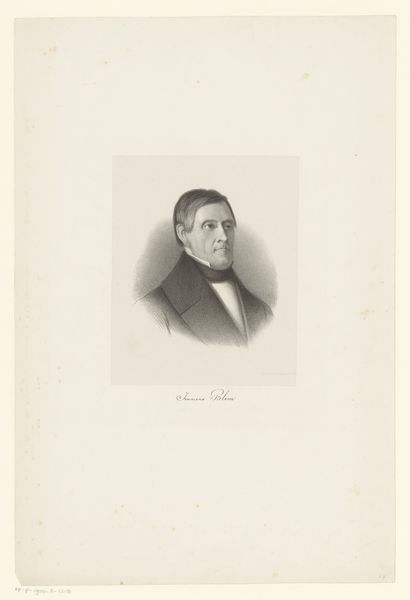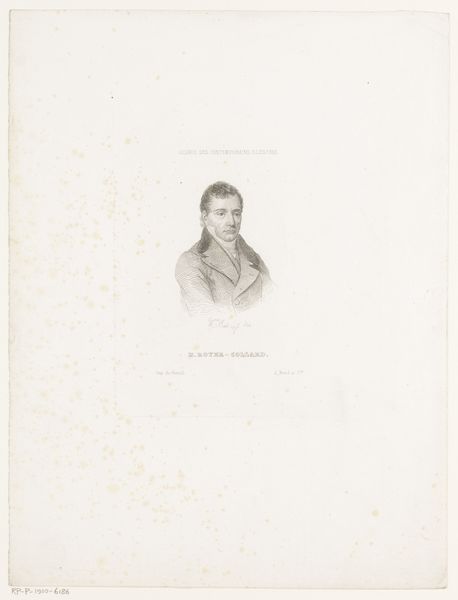
lithograph, print
#
portrait
#
lithograph
# print
#
realism
Dimensions: height 587 mm, width 432 mm
Copyright: Rijks Museum: Open Domain
Curator: Here we have Ignaz Fertig's lithograph from 1846, a "Portrait of Ferdinand von Schaezler." I’m immediately struck by how meticulously crafted it is, despite its seemingly straightforward presentation. Editor: Ah, my first thought? A bit severe, isn't he? It has the look of someone taking themselves very seriously, almost as if permanently posing. Is that a hint of sadness in his eyes, or just a masterclass in maintaining decorum? Curator: As a lithograph, we need to consider the reproductive processes at play. Think about the layers of labor, the skilled artisan copying the likeness, the economics of printmaking that made portraits more accessible. This wasn’t just about representing Schaezler, it was about circulating his image within a certain social sphere. Editor: True, the mechanics behind it are impressive. The shading is remarkable for a print, giving real depth to his features and the drape of his coat. I find it rather beautiful, this almost ghostly echo of a man. You see a powerful guy whose image needed spreading, I see a whisper from history, caught in ink and stone. Curator: The texture too! Observe the rendering of fabrics and the careful hatching. Lithography allowed for nuances unattainable in some other print forms, mimicking the subtlety of drawing, therefore enhancing the sitter’s prestige by visually encoding social class through luxurious details. Editor: Maybe I’m projecting, but that precisely rendered quality is also what makes it slightly unsettling! There is an intensity in trying to capture every detail, making me wonder what wasn't recorded, or what escaped the process of translation onto stone? What’s concealed by all that meticulously reproduced finery? Curator: Perhaps, we can view realism itself as a form of selective concealment. The point wasn't to capture "truth", but to manufacture an impression. This image actively shapes how we think about Schaezler and his place within a certain society. Editor: So well put. Thinking about it now, the mood of the image sits perfectly in the frame it has: between capturing and shaping how we perceive it. Thanks, as ever, for making me see what was hidden. Curator: Likewise, these reflective considerations allow us to deepen the image through this discourse around it.
Comments
No comments
Be the first to comment and join the conversation on the ultimate creative platform.

